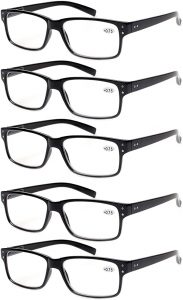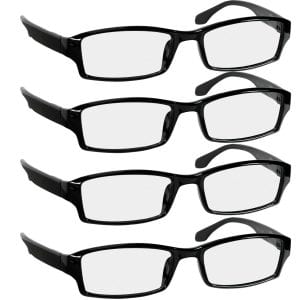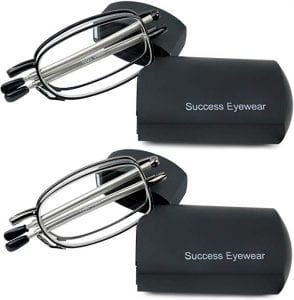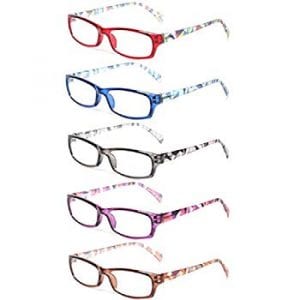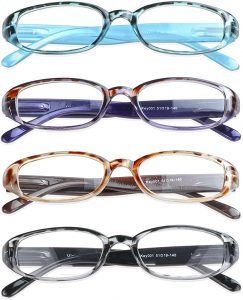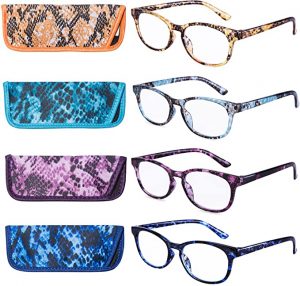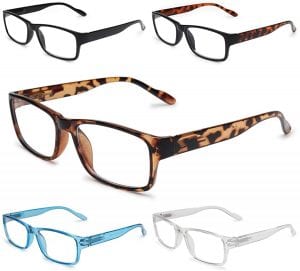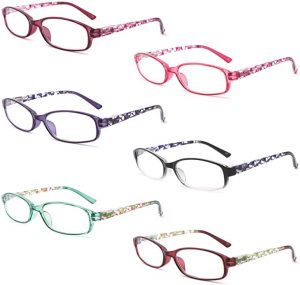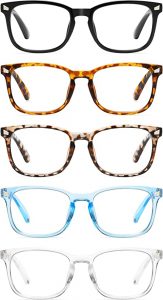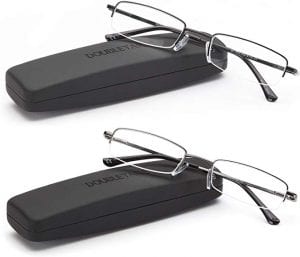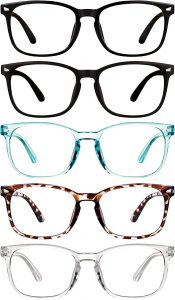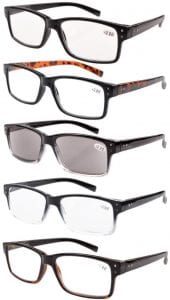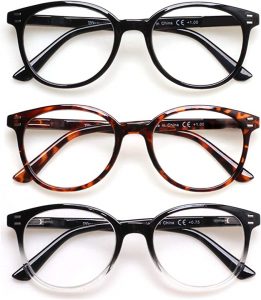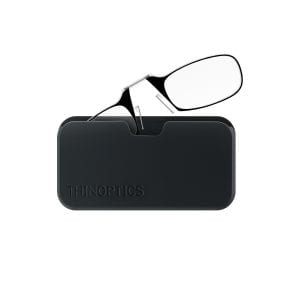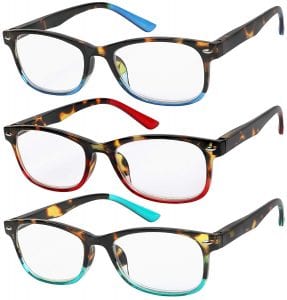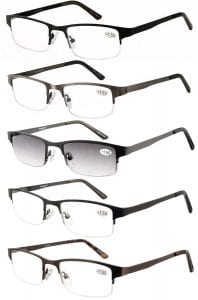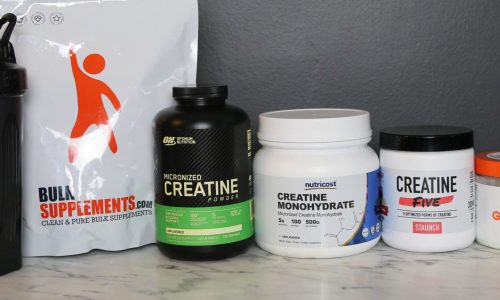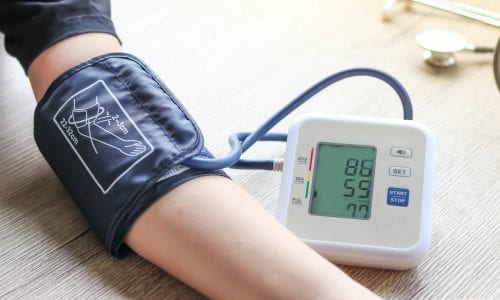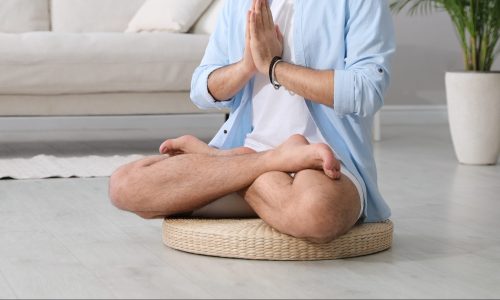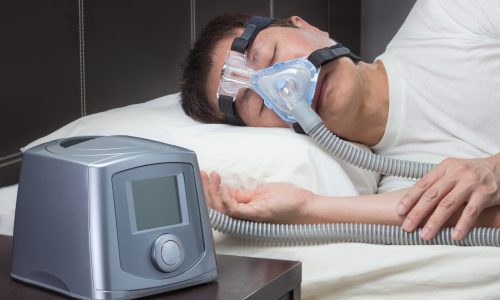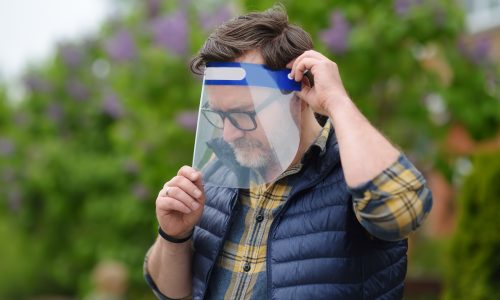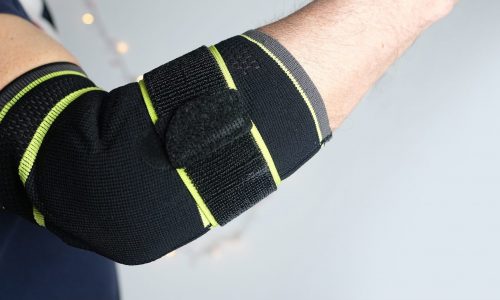The Best Reading Glasses
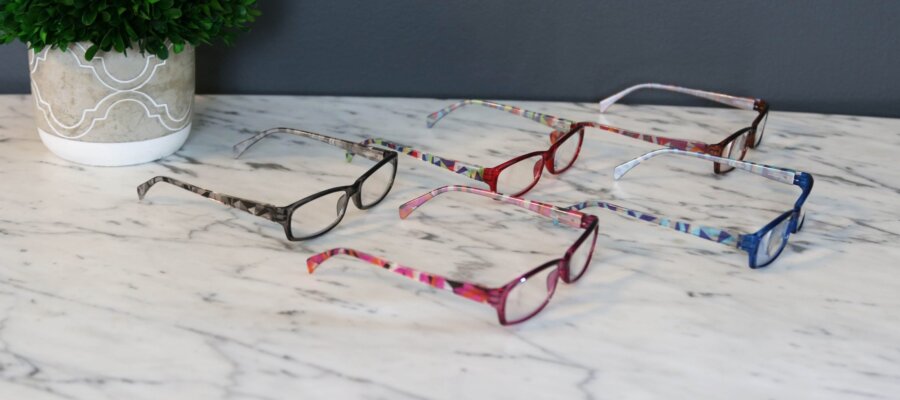
Our Review Process
Don't Waste Your Money is focused on helping you make the best purchasing decision. Our team of experts spends hundreds of hours analyzing, testing, and researching products so you don't have to. Learn more.
Our Picks For The Top Reading Glasses
- 1. NORPERWIS Unisex Spring Hinge Reading Glasses, 5 Pairs
- 2. TruVision Readers Reading Glasses, 4-Pair
- 3. Success Eyewear Folding Reading Glasses, 2-Pair
- 4. Kerecsen Ladies Reading Glasses, 5-Pair
- 5. VisionGlobal Unisex Reading & Blue Light Glasses, 4 Pairs
- 6. EYEGUARD Women’s Snake Print Reading Glasses, 4 Pairs
- 7. Gaoye Blue Light Blocking Spring Hinge Reading Glasses, 5-Pack
- 8. IVNUOYI Women’s Blue Light Anti-Glare Reading Glasses, 6 Pairs
- 9. CCVOO Unisex Blue Light Blocking Anti-Glare Reading Glasses, 5 Pairs
- 10. DOUBLETAKE Reading Glasses, 2-Pair
- 11. CHEERS DEVICES Unisex Blue Light Reading Glasses, 5 Pairs
- 12. Eyekepper Men’s Reading Glasses, 5-Pair
- 13. SIGVAN Unisex Spring Hinge Reading Glasses, 3 Pairs
- 14. ThinOptics Reading Glasses with Pod Case
- 15. Success Eyewear Reading Glasses, 3-Pair
- 16. Eyecedar Men’s Reading Glasses, 5-Pair
If you're shopping for a new set of reading glasses, this one hits all the marks. The lenses are well-balanced and offer consistent magnification. The spring-hinged frames have a rectangular shape that looks good on most faces.
Smart-Looking FramesThese understated frames offer relief for tired eyes.
Quality is the best word to describe the TruVision Readers Reading Glasses, 4-Pair. The company uses sure-flex comfort spring arms and dura-tight screws to ensure the glasses hold together when used on a daily basis. With each purchase you'll get a complimentary micro-fiber cleaning cloth bag.
Best for Daily UseYou don't have to worry about the TruVision Readers Reading Glasses, 4-Pair coming apart, as the glasses use quality spring hinges and durable screws.
One of the best features of the Success Eyewear Folding Reading Glasses, 2-Pair is that they fold in half. You can neatly store them in the provided plastic cases, which will also protect them from scratches. Since the eyeglasses are unisex in design, anyone can wear them while reading a book or newspaper.
Folds for ConvenienceAvailable in two different colors, the Success Eyewear Folding Reading Glasses, 2-Pair are unisex and designed to look great on everyone.
With five fun colors to play around with, the Kerecsen Ladies Reading Glasses, 5-Pair give you the opportunity to match the glasses to your outfit. Both the lenses and the frames are plastic, which means they are less likely to break if accidentally dropped. Even though the lenses are plastic, users report there is no distortion and all text and im...
Five Fun ColorsThe Kerecsen Ladies Reading Glasses, 5-Pair are not only comfortable to wear, but also produce clear images without any distortion.
Buying Guide
If you find yourself squinting to read the morning newspaper, you may simply need a pair of reading glasses. Fortunately, this type of glasses has come a long way over the years. It is now possible to get a quality pair of reading glasses at a reasonable price.
As you browse the available models, determine whether you’re interested in a fun and colorful design, or one that is a bit more elegant. There are models that have patterns along the arms, including some that resemble stained glass. Reading glasses with a slim and simple semi-rimless look would be best for use in the office or in a business meeting.
What to Look For
- Review the fit of the reading glasses. You not only want comfort around the bridge of your nose, but the arms also need to hold tight against your temples, so the glasses don’t slide off. The company will list the frame size in its product description as well.
- Always check the construction of the reading glasses. Some are made of stainless steel, while others are plastic. Plastic isn’t a negative, as long as its quality made. For example, the TruVision Readers Reading Glasses, 4-Pair uses sure-flex comfort spring arms and dura-tight screws for glasses that won’t fall apart after just a few uses.
- Always check the terms of any satisfaction guarantee or product warranty. Some last just 90 days and others are provisional.
- Finally, consider any extras that may be important to you. Some reading glasses come with soft protective cases, while others have hard ones that protect against drops. The model may even come with a micro-fiber cleaning cloth. There are also reading glasses that fold in half for easy portability.
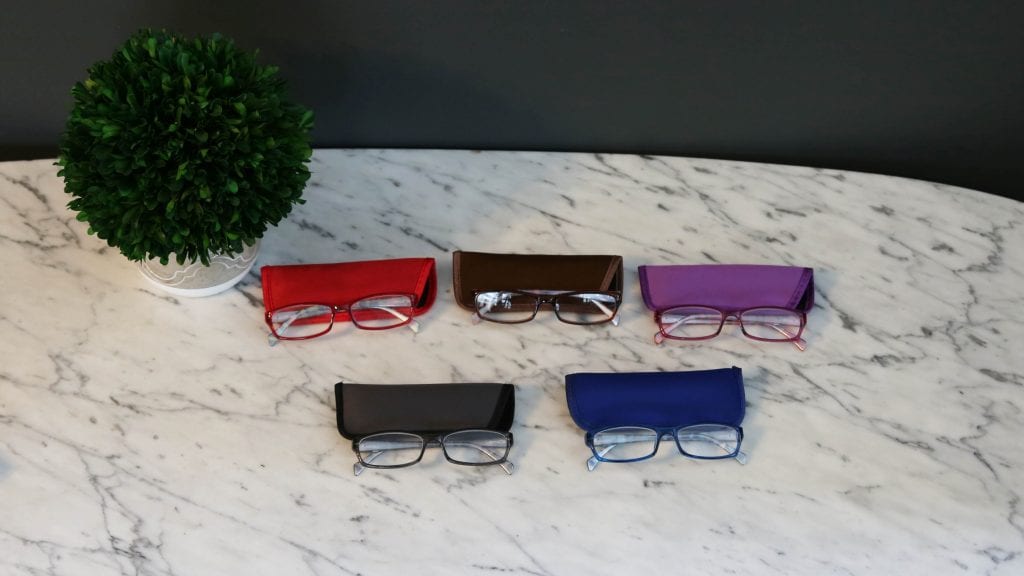
More to Explore
Cleaning your glasses
- Your reading glasses will need to be cleaned often. Before you begin, wash and dry your hands. Use lukewarm water and one drip of a liquid dish soap to wash the lenses and frames. Rinse completely clean with water and towel dry with a lint-free cloth.
- It’s recommended that you avoid using chemical glass cleaners on the lenses of your reading glasses. They can actually harm the lenses, especially if your lenses have a protective coating that prevents scratches.
- How to get rid of scratches on glasses

